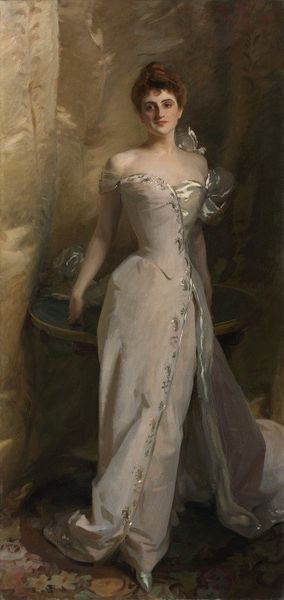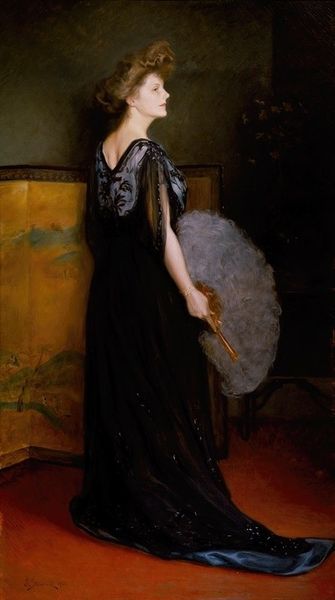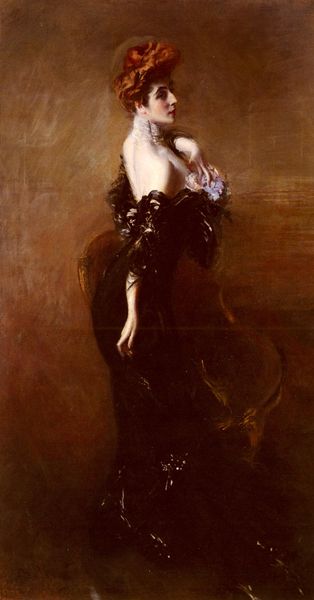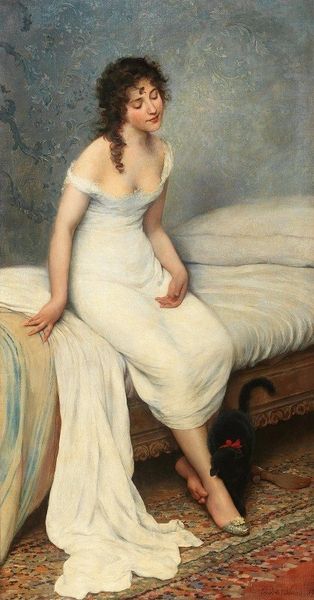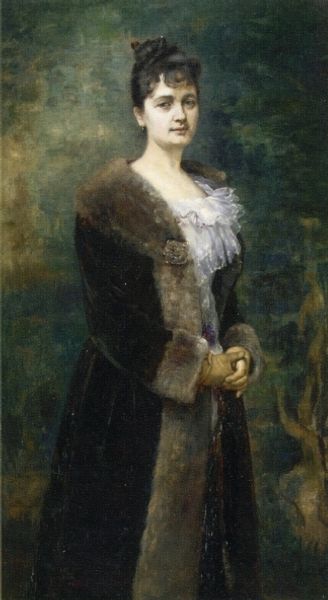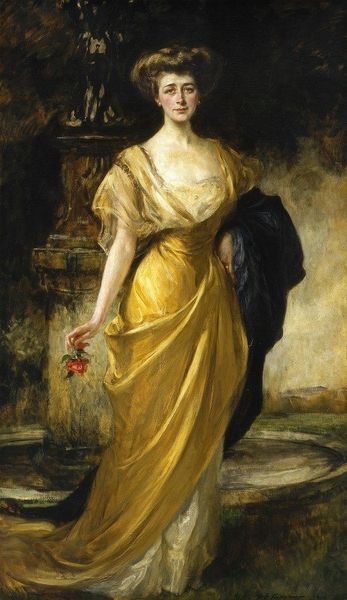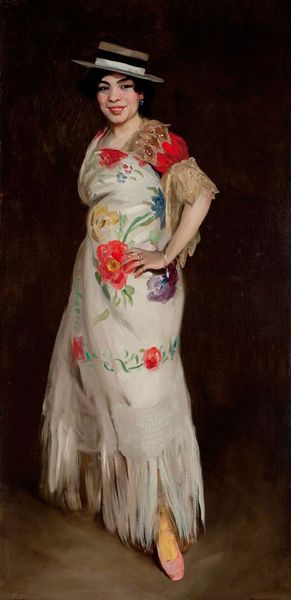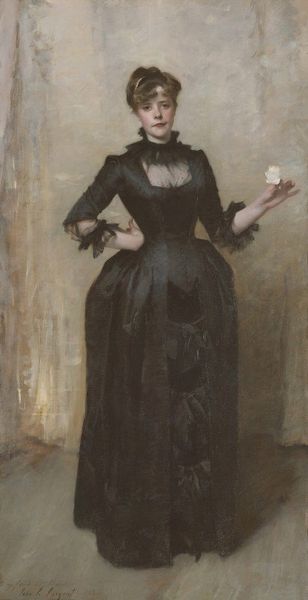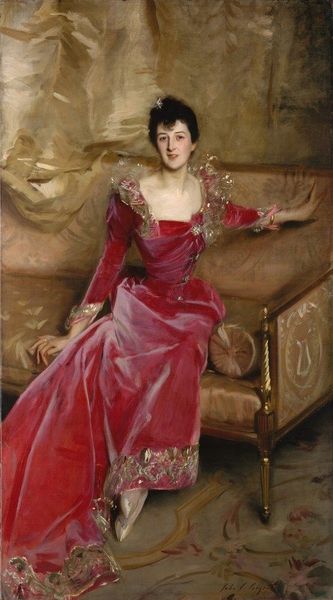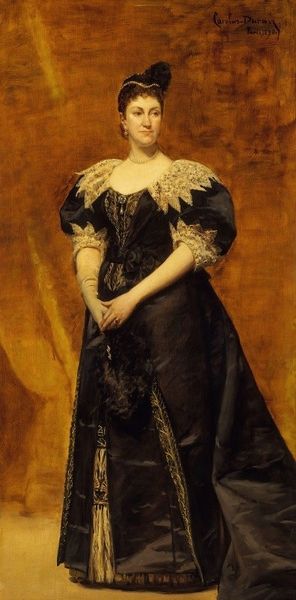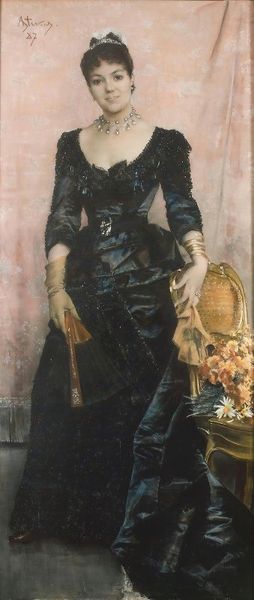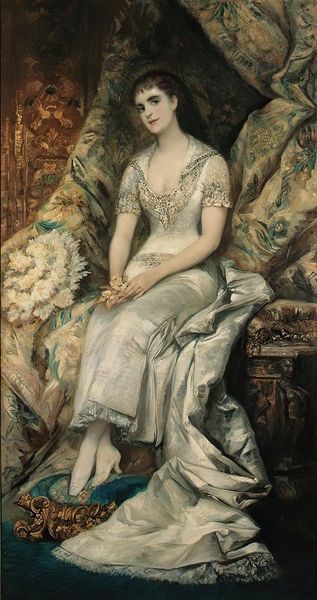
Copyright: Public Domain: Artvee
Curator: Right then, let's turn our attention to Léon François Comerre’s "Portrait de Madame Jean Maillard-Norbert," created in 1913 using oil paints. A grand title for a grand lady, wouldn’t you say? Editor: It certainly suggests a life of elegance. My first thought is just how dreamy the composition is! A softness in the lines, a sort of...faded glamour. Makes me wonder about her story. Curator: Well, that faded glamour you perceive speaks to a fascinating blend of romanticism and academic art happening at the time. The rose at her chest is a classic symbol. It speaks to love, of course, but its placement suggests something close to the heart. And I love that we can sense her personal narrative woven in her expression and pose. Editor: Absolutely. Roses, they can also mean secrecy, can't they? This one seems almost too big, a bit weighty. And paired with that dress—it's a daring colour, almost like dark, antique gold—there’s a real sense of hidden depths here. And let's not ignore that ever so cute companion beside her feet, nestled in her gorgeous skirt. Curator: Ah, the delightful little canine companion! And indeed, there's so much interplay here: that contrast between the lightness of her face and hands and the shadow in the dress, that creates a striking visual. Even her pale gown gives the illusion of the antique column beside her. Do you agree it also suggests a particular understanding of femininity and self-presentation during that era? Editor: Precisely! Those subtle gestures speak volumes. You get the feeling she's a woman accustomed to attention but perhaps also weary of it, even if it’s hidden just below the surface. Also the inclusion of a pet signifies status, but is also something warm. Overall, Comerre creates such a compelling visual. The dress, that rose, and that subtle side glance...it's pure visual storytelling, a woman who exists with status but who is more complex that it would seem at first. Curator: In the end, the most enduring portraits are the ones that ignite these sorts of little narrative fires within us. I always find myself looking at this artwork, contemplating it for extended periods of time, trying to come to a consensus of how I imagine the scene. Editor: I couldn’t agree more. This one stays with you long after you've walked away, pondering the narrative the painting creates.
Comments
No comments
Be the first to comment and join the conversation on the ultimate creative platform.
